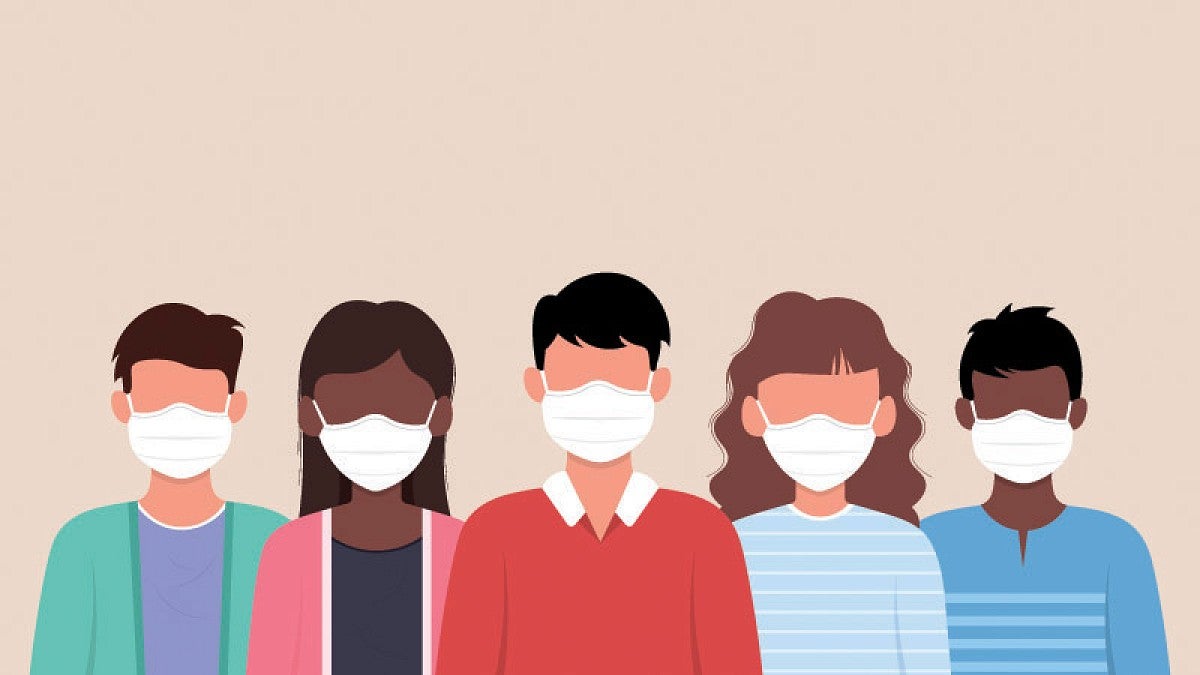Even with the dramatic rise in cases caused by the COVID-19 delta variant, masks and face coverings are important in limiting the spread of the coronavirus and reducing the chances of infecting others. The UO’s mask requirement is one of the reasons why the university has been able to return to in-person instruction for fall term.
The UO is following state of Oregon and U.S. Centers for Disease Control and Prevention guidance requiring face coverings indoors at all times (with a few exceptions; see below) and outdoors when distance cannot be maintained.
“Our surveys have shown very high compliance with mask use among the UO community,” said Andre LeDuc, the UO’s chief resilience officer. “Masks are proven to significantly limit the spread of COVID-19, including the delta variant. This requirement will remain in place until no longer necessary from a public health standpoint.”
Are masks required on campus?
Face coverings are required indoors in all UO facilities regardless of vaccination status. Face coverings can be removed when in a room alone or when actively eating or drinking in most places. Face coverings must fully cover the nose and mouth. Mesh masks, lace masks and other face coverings with openings, valves, holes, vents or other visible gaps in the design or material are not in compliance with this policy.
Face coverings are required outdoors when physical distance cannot be maintained.
Are face coverings required in classrooms?
Yes. Face coverings are to be worn while attending in-person classes at all times.
Can an instructor teach in-person classes without a mask if they can maintain at least 6 feet of distance from the students?
Yes, a fully vaccinated instructor who is at least 6 feet away from an audience can remove their mask when all others in the room are masked. If the room cannot accommodate 6 feet distancing between an unmasked instructor and students, then the instructor must remain masked.
What exemptions are in place for the mask requirement?
Mask requirement exceptions include:
- While actively eating and drinking in most places, but not, for example, in classes.
- While swimming.
- Children under the age of 2 should not wear a mask.
- In campus housing in a student’s own residence hall room or family housing unit and in shared residence hall restrooms.
Individuals who have a medical condition that makes it hard to breathe or a disability that prevents the individual from wearing a face covering can request an accommodation. Faculty and staff accommodations may be requested through the Office of Human Resources and student accommodations may be requested through the Accessible Education Center.
What other information does the UO have about face coverings?
See the COVID-19 regulations page for additional guidance and requirements, and see the prevention page for more about face coverings in classrooms.
For more about plans for the new school year, see the main #ForwardTogether page.


